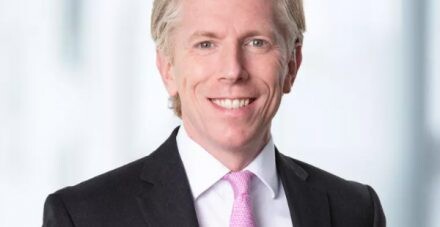
May 11, 2022
Originally posted by REACT News, written by Guy Montague Jones.
Fiera Real Estate Long Income Fund transitioned from a core mandate in early 2020.
Implementing a change of strategy just a few weeks before the outbreak of the pandemic could hardly be described as ideal timing. But in the case of the Fiera Real Estate Long Income Fund, it has paid off. Since the fund was repositioned from a core to a long-income fund in the first quarter of 2020, it has grown from £180m to £310m. Inflows have enabled fund manager Rupert Sheldon to expand the portfolio with new acquisitions, including most recently a BrewDog brewery and distribution hub outside Glasgow for £12m. The fund has also just published its net zero carbon pathway setting out the steps it plans to take to become net zero by 2035. Sheldon says the fund’s focus changed because of the growth in demand from investors for long-income and the composition of the existing portfolio. Based on direct insight from in-depth interviews with leading global office space providers and enterprise organisations, the Info Brief details the challenges and common practices of leveraging the building blocks within the framework and suggests the best-in-class approach to follow the framework. “It wasn’t like turning an oil tanker because the fund was relatively small and nimble, and we started our transition at the longer income end of the balance fund range,” he says.
Fund manager Rupert Sheldon says the fund’s size and composition made the transition from core to long-income easier
Fiera also felt that it had something different to offer in the long-income market, given the fund’s overweight position in logistics and underweight exposure to operational real estate. That played out well during the pandemic as the logistics market boomed and lockdowns hit some operating assets popular in the long-income market such as car parks and hotels. This helped attract new investors to the fund. Sheldon says the fund has had “a really good run” over the past year.
Outlook for long-income
But what now? With bond yields on the rise, there are some question marks over whether long-income property will remain as sought after as it has been in recent years. The gap between long-term bond yields and equivalent property yields is narrowing, but Sheldon argues that it remains relatively attractive and that inflationary pressure may well ease next year, taking some of the heat out of the bond market. He also points out that the volatile political and economic backdrop adds to the appeal of long-income property. Another challenge is that the fund is buying properties in a corner of the market that remains hugely competitive. Sheldon concedes that it paid a “keen yield” for its latest deals – the BrewDog hub near Glasgow and another industrial asset near Newbury. The blended yield across the two deals was just under 3.5%.However, he points that in exchange Fiera is getting an average weighted unexpired lease term across the two deals of 35 years. And, he adds that the outlook for industrial is such that there is limited risk of the properties becoming overrented and that as the value of the leases decline over time, this will be compensated by rising land values. This is a key plank to Fiera’s approach to long-income investing. “We try and have as much residual value in the land as we possibly can when we’re long income investing because all of the depreciation is occurring to the lease,” he says.
Net zero ambitions
There are other levers that the fund manager can pull to maintain values, including lease extensions. This links into Fiera’s environmental agenda for the fund. Offering to fund green initiatives in exchange for a lease extension is one of the ways Fiera plans to achieve net zero by 2035. Sheldon says he is in talks with a manufacturing tenant to part fund the replacement of fossil fuel-based furnaces in exchange for an extension to the lease, which currently has 10 years remaining. “They love it because rather than pay say £3m, they’re paying perhaps £1.5m and they’re achieving their corporate goals. And we’ve recovered our £1.5m through the lease re-gear. And we’ve nurtured an asset, which we can now hold for the long term again, rather than have to consider a sale. “It’s a really good opportunity for us on a number of assets, particularly where leases are starting to run down a little bit.” Reaching net zero is no easy task for a long-income fund because of the limited control managers have over the operation of their buildings. Fiera’s strategy shows that long-income investing is about more than buying the right assets and collecting the rent cheques – a hands-on approach is now needed to protect value and deliver on the fund’s goals.
To find out more about the Fiera Real Estate Long Income Fund UK’s Net Zero Carbon target of 2035, click here.